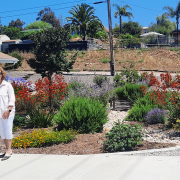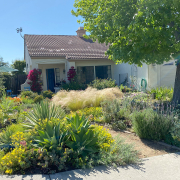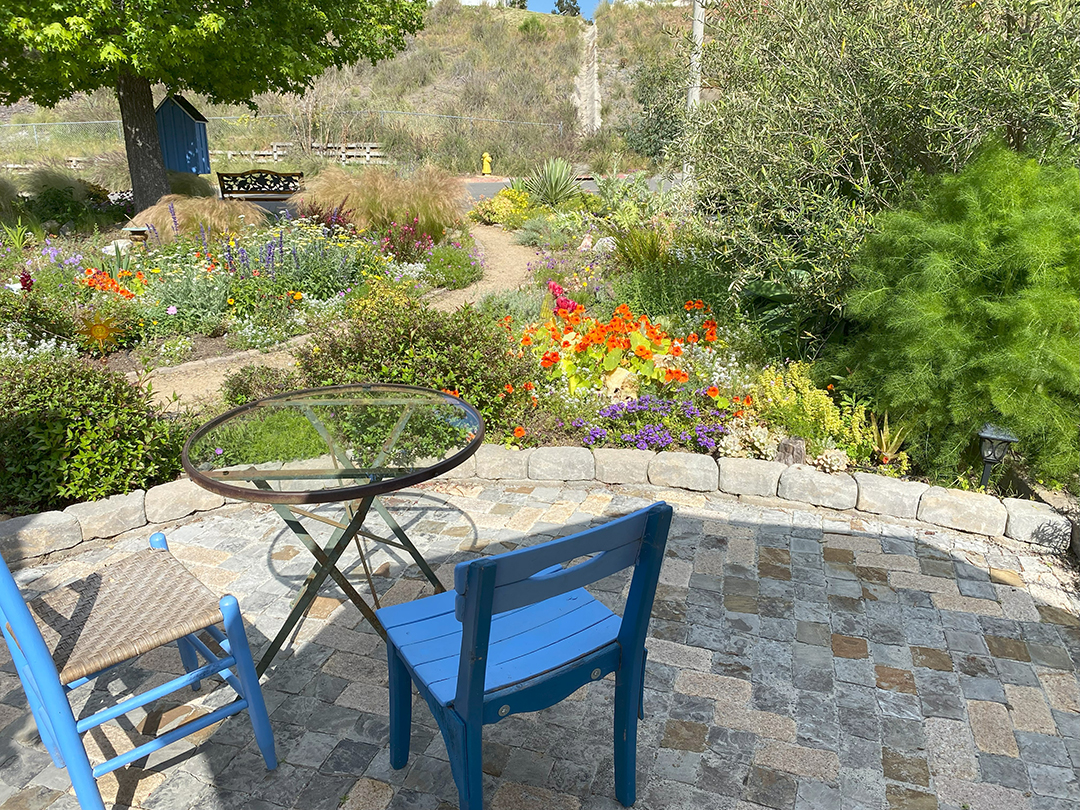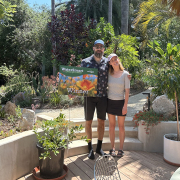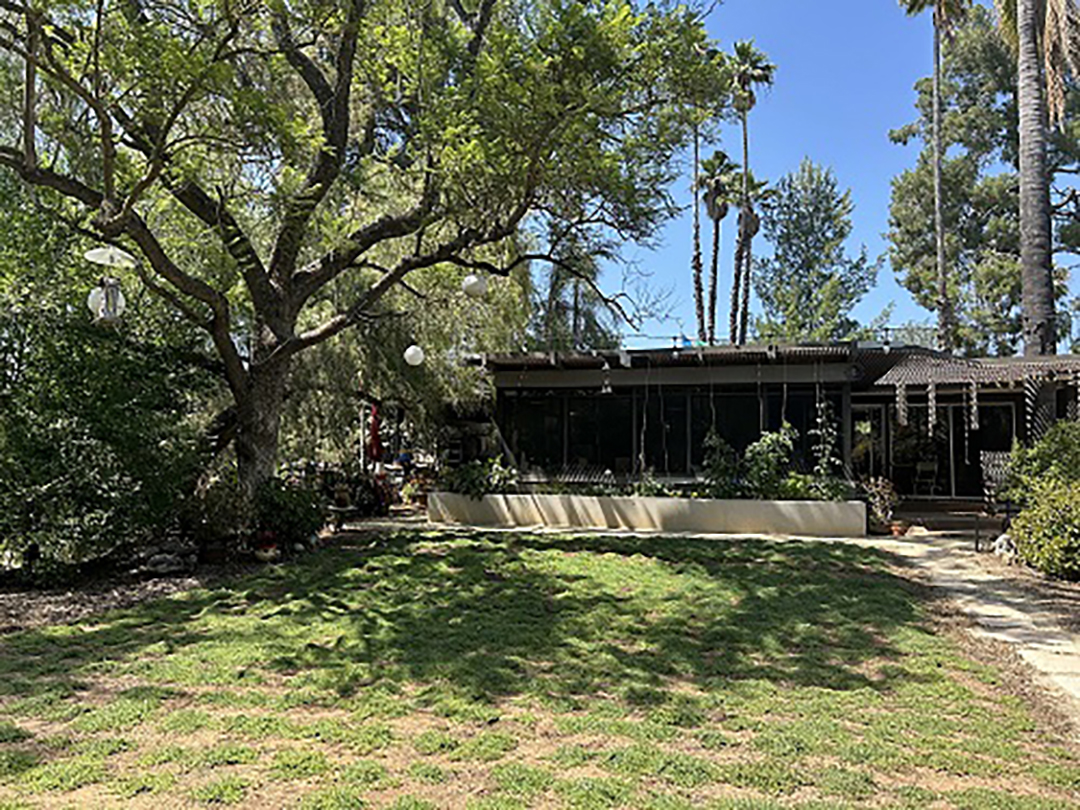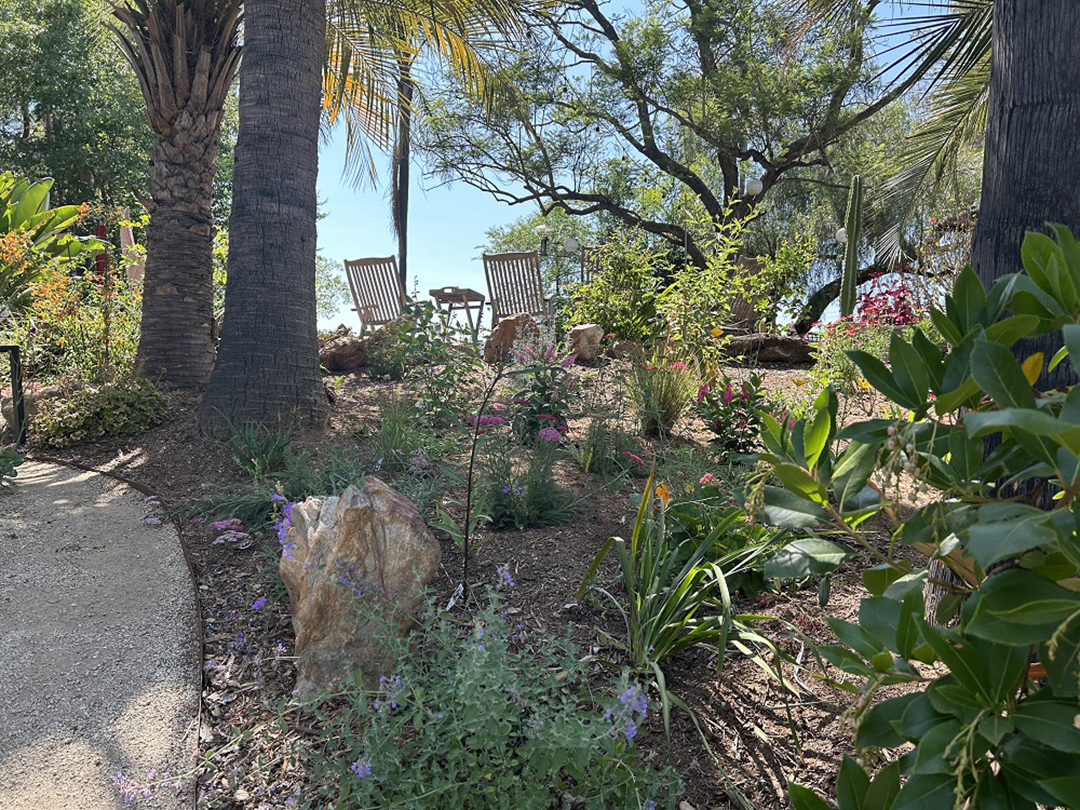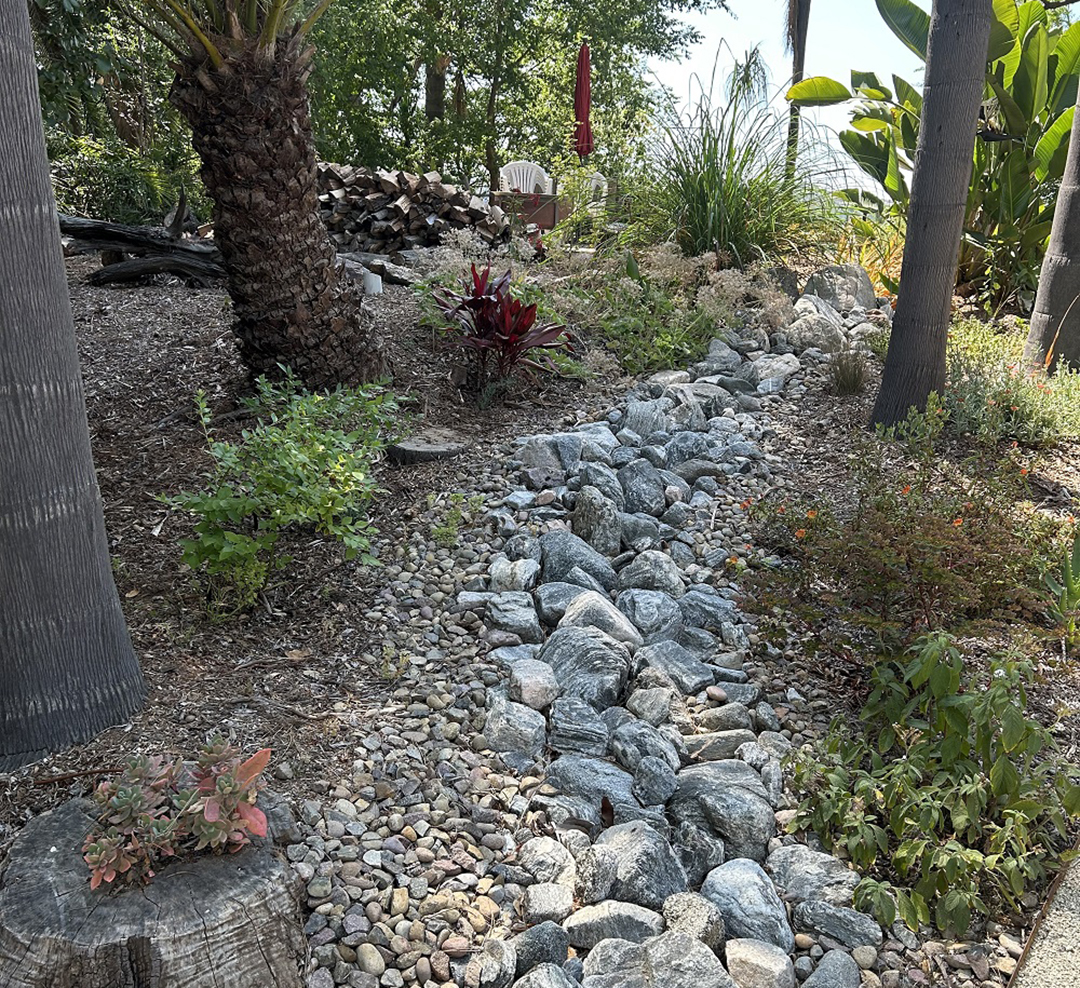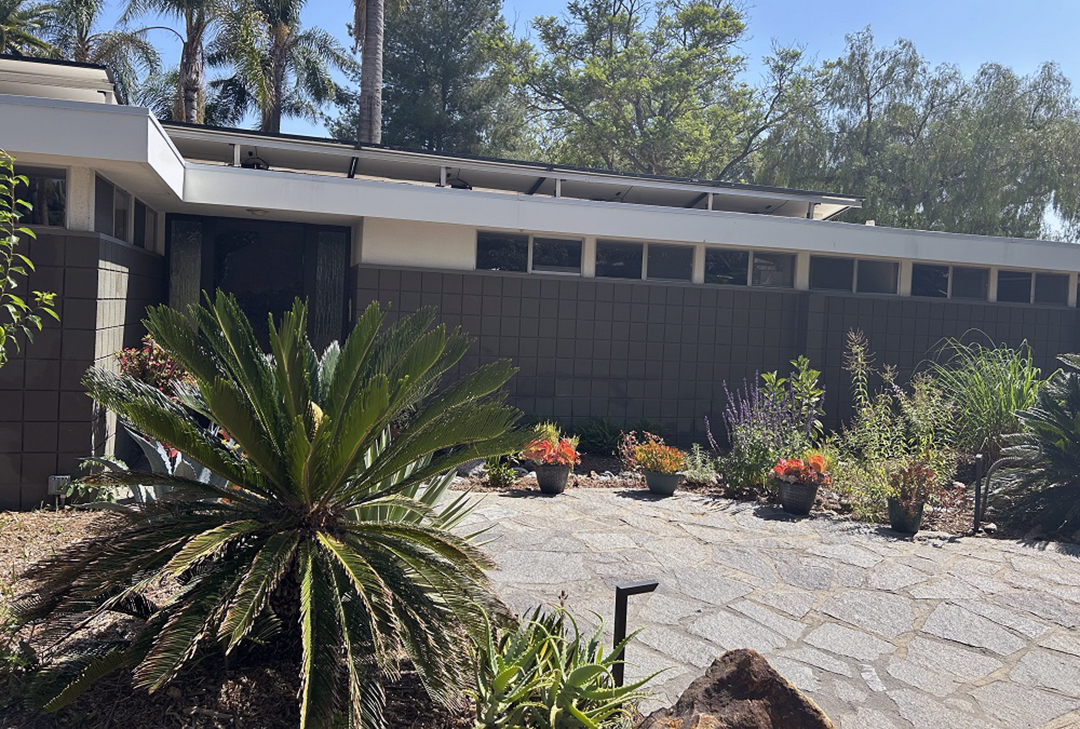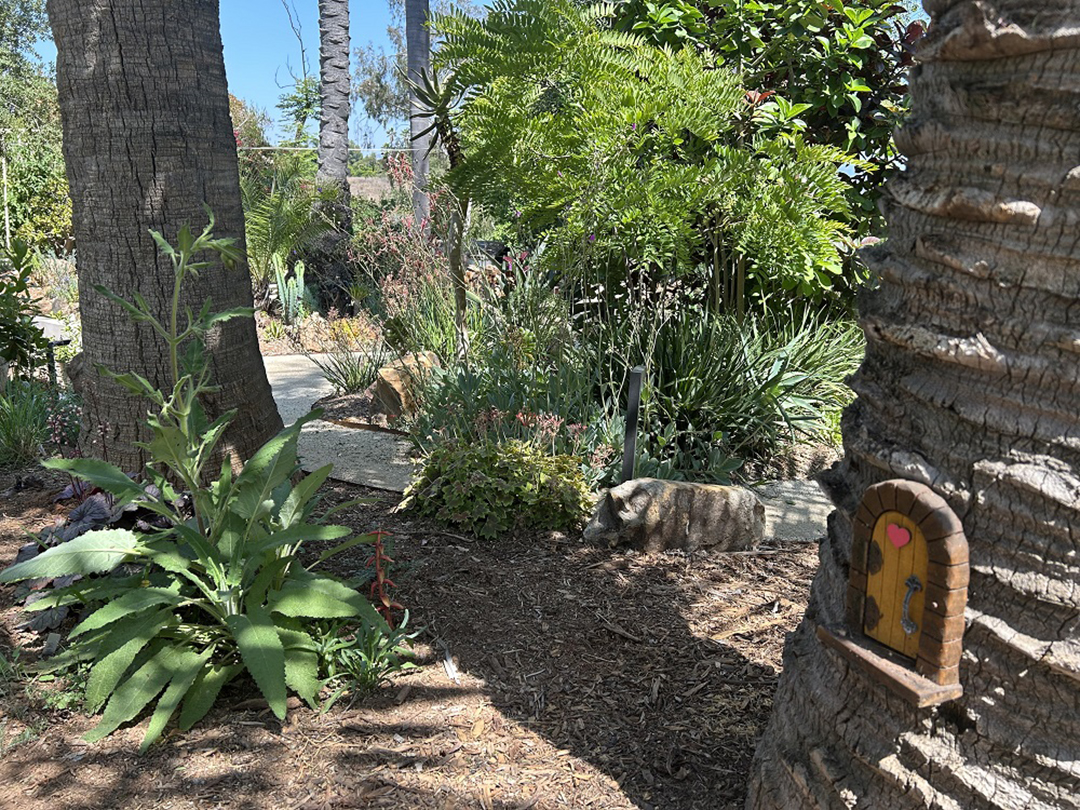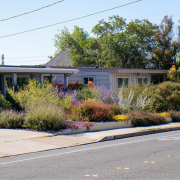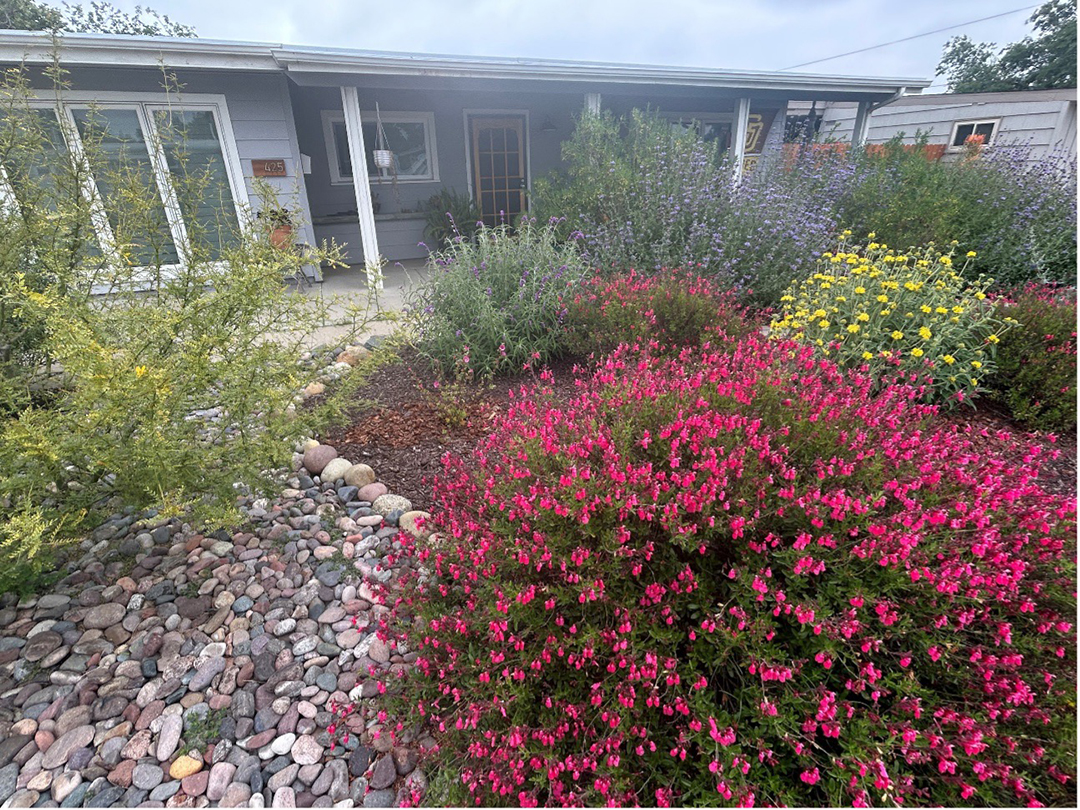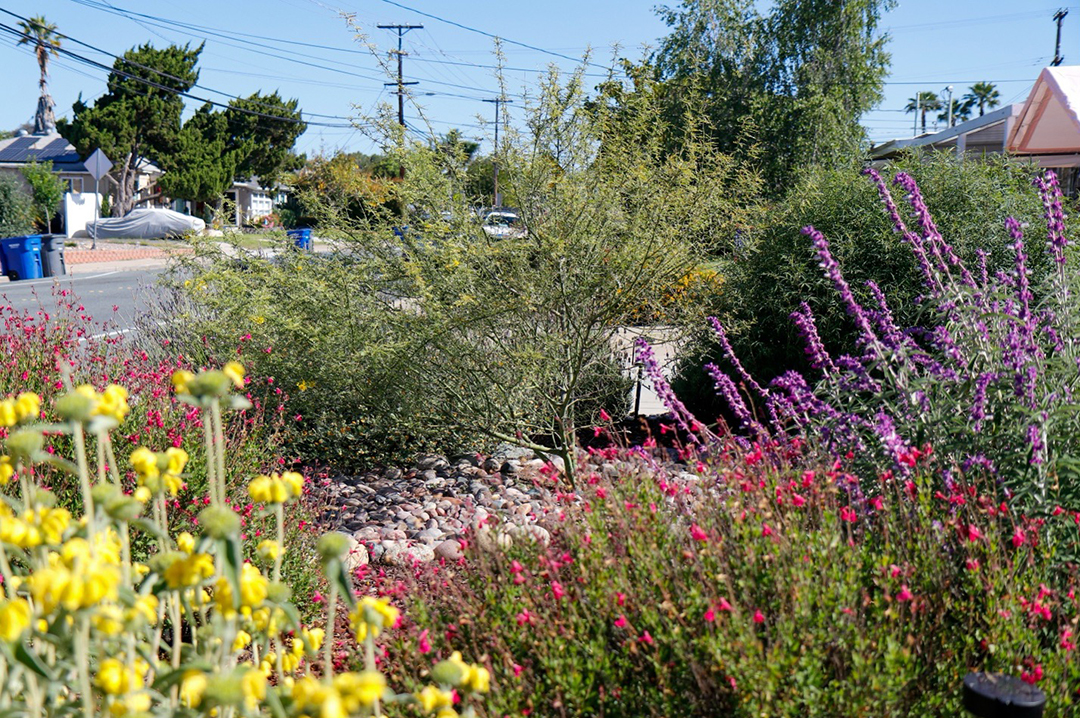Landscape Makeover Trio Named Vallecitos 2025 Contest Winners
The Vallecitos Water District named three beautiful and water-efficient landscape makeover projects as its trio of 2025 Landscape Makeover Contest Winners.
Lisa Urabe, Vallecitos Public Information Representative and U.C. Master Gardener, says that although each of the three landscape winners designed vastly different gardens, all of the winners use their gardens as natural extensions of their homes, blending indoor and outdoor living.
In addition, the winners prioritize sustainability by incorporating low-water plants, and their landscapes are all buzzing with life, thanks to thoughtful choices that attract pollinators, like bees and butterflies.
Take a video tour through the winning landscape makeovers.
Making A Change Results In Winning Landscape Makeover
Thomas and Georgia Shultz have been Vallecitos Water District customers for 45 years. They decided it was time for a change from the grass they had “for the longest time.” When they learned about taking advantage of rebates to help them pay for the makeover, it sealed the deal.
“We decided to take out all the lawn, and put in a waterwise landscape,” said Tom Shultz. He and Georgia worked with Stonebrook Landscapes to design a plan for their 2,800-square-foot yard, based on a layout provided by Tom, which prioritized pollinator-friendly native plants. The Shultzs did most of the work themselves.
The new landscape features milkweed, lantana, Little John Bottle Brush, California Lilac, English Lavender, Tuscan Blue Rosemary, Kangaroo Paw, Common Yarrow, Fan Flower, multiple types of sages, and a Crepe Myrtle tree.
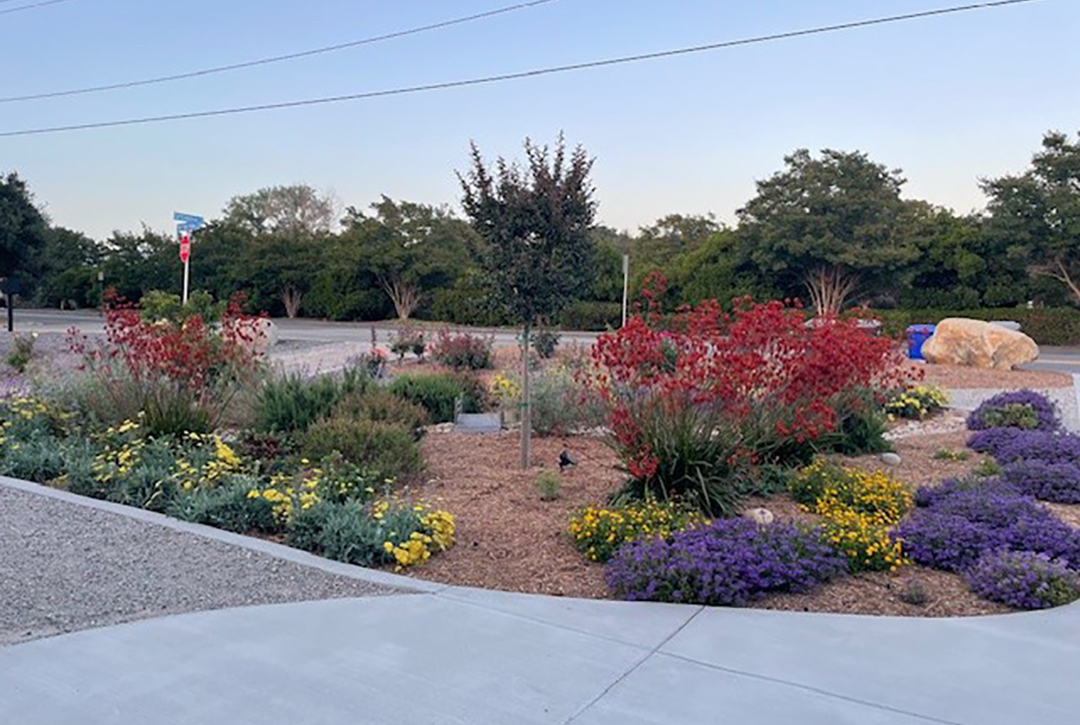
The Shultzs selected pollinator-friendly plants and did most of the installation themselves. Photo: Vallecitos Water District
Tom says the water savings are significant. “We were averaging between 20 and 30 units of water a month, and now we’re running in the 12 to 15 units a month.”
Georgia says neighbors now stop by and say they love the yard. She tells them about the rebate program available through the Metropolitan Water District. “It’s an amazing program Vallecitos Water District is using to encourage people to help us make better choices for our planet, for our water usage, instead of grass.”
“It’s exciting for us to be recognized for our work. We really appreciate Vallecitos Water District recognizing that we are doing something to help conserve water and to serve the community,” added Tom.
Second Place Project Adds Water Saving Irrigation Upgrades
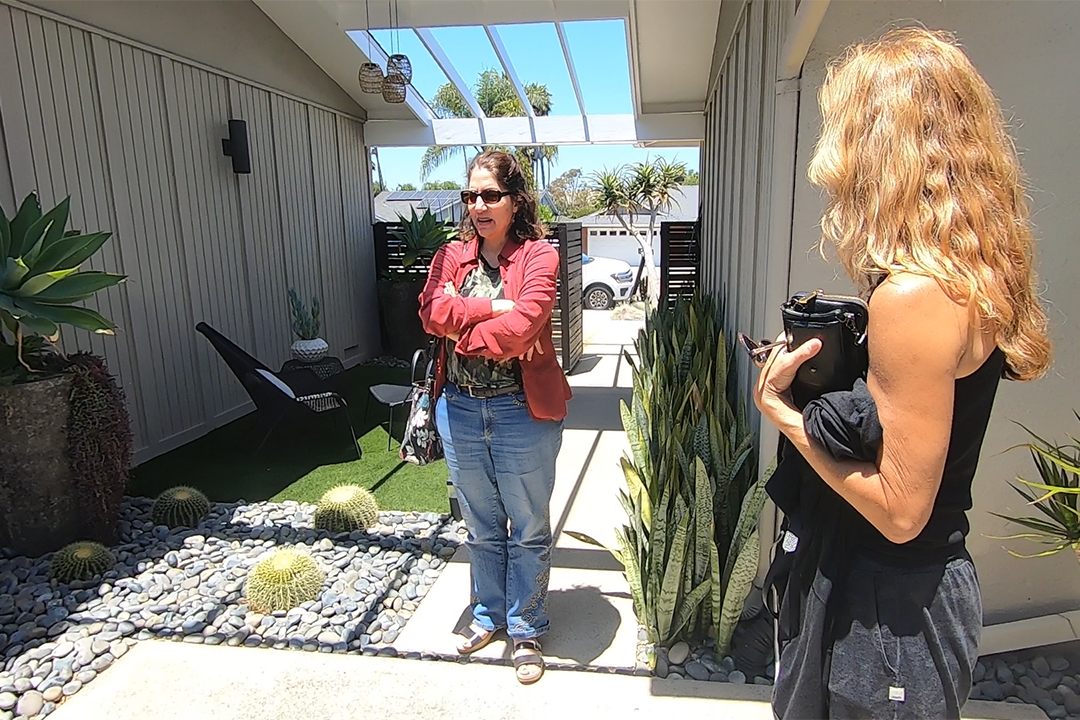
Vallecitos Water District Public Information Representative and U.C. Master Gardener admires Kelly Ellingson’s second place winning landscape makeover project. Photo: Vallecitos Water District
Vallecitos Water District customer Kelly Ellingson learned about the annual landscape makeover contest when Lisa Urabe visited her neighborhood. “The fact that Lisa came by to tell us about the contest, I thought it was above and beyond.”
Ellington replaced what she calls a “hodgepodge” of rock and patchy grass with California native plants and a touch of artificial turf. The biggest change was replacing the sprinkler system with a drip irrigation system, which she recommends to other homeowners.
“The favorite part of our landscape for us is how low-maintenance everything is, not having to worry about water and not having to worry about plants dying and replacing them.
“Now, when we look at our water bill, we’re pleasantly surprised each other to see that it’s not only aesthetically the direction we were headed, but it’s also saving us a lot of money.
“The outdoor patio for us is just like an added living room. We live out here. We spend so much time out here that we’re just so grateful that we did it,” said Ellington.
Third Place Winner Brings Beauty and Color to Life

Third-place winner Susan Haskell says she now spends more time outdoors in her patio surrounded by colorful plants. Photo: Vallecitos Water District
Third-place winner Susan Haskell said her original backyard “had no redeeming qualities whatsoever.” Haskell decided a waterwise plan was the right approach and got additional inspiration from a previous winner featured in the Vallecitos Water District’s “Between The Pipes” customer newsletter.
“I thought it was just a really good thing for a water district to send out information and saving water,” said Haskell.
Haskell says she loves the colorful, waterwise plants, the beautiful dry river bed, and the seating area that allows her to enjoy time in the backyard “just chilling.”
“Before this garden, I was sort of a gray and beige person. The beauty and the color, the vibrancy, it has turned me into a colorful person,” said Haskell.

